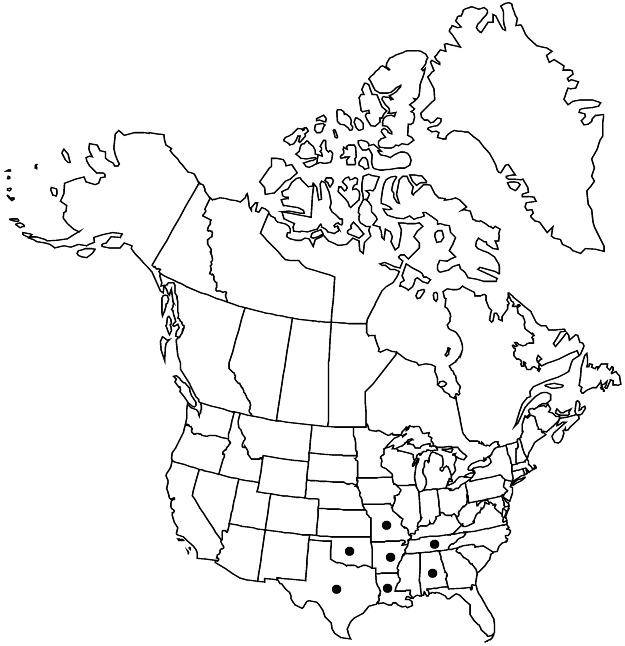Minuartia muscorum
Sida 15: 95. 1992.
Plants annual. Taproots filiform. Stems erect, green, 10–55 cm, glabrous or weakly stipitate-glandular distally, internodes of all stems 0.5–2.5 times as long as leaves; wintering stems absent. Leaves not overlapping, connate proximally, with loose, scarious sheath 0.4–0.8 mm; blade straight to variously curved, green, flat, 1-veined, linear-lanceolate to oblanceolate, (5–)10–35(–50) × (0.6–)1.5–3.2 mm, flexuous, margins not thickened, herbaceous or thinly scarious, smooth, apex green, acute, flat, dull, glabrous; axillary leaves absent. Inflorescences 5–50+-flowered, open cymes; bracts lanceolate to subulate, herbaceous. Pedicels 0.6–5.5 cm, stipitate-glandular. Flowers: hypanthium shallowly disc-shaped; sepals prominently 3-veined, lanceolate (herbaceous portion narrowly lanceolate), 3–4 mm, to 5 mm in fruit, apex green, acute, not hooded, stipitate-glandular; petals obovate, 1.6–3 times as long as sepals, apex rounded, broadly notched. Capsules on stipe ca. 0.1 mm or shorter, ovoid to broadly so, 5.2–7 mm, longer than sepals. Seeds black, suborbiculate, radicle obscure, plump to slightly compressed, 0.6–0.8 mm, muriculate-papillate.
Phenology: Flowering spring–summer.
Habitat: Prairies, meadows, roadsides
Elevation: 200-500 m
Distribution

Ala., Ark., La., Mo., Okla., Tenn., Tex.
Discussion
Minuartia muscorum is closely related to M. patula, and is distinguished by the often longer and wider leaves, often longer distal stem internodes, consistently three-veined sepals, and shiny, black, muriculate-papillate seeds. B. Maguire (1951) treated this taxon as both a variety of Arenaria patula and a new species; see R. K. Rabeler (1992) for a review of the curious nomenclatural history.
Selected References
None.